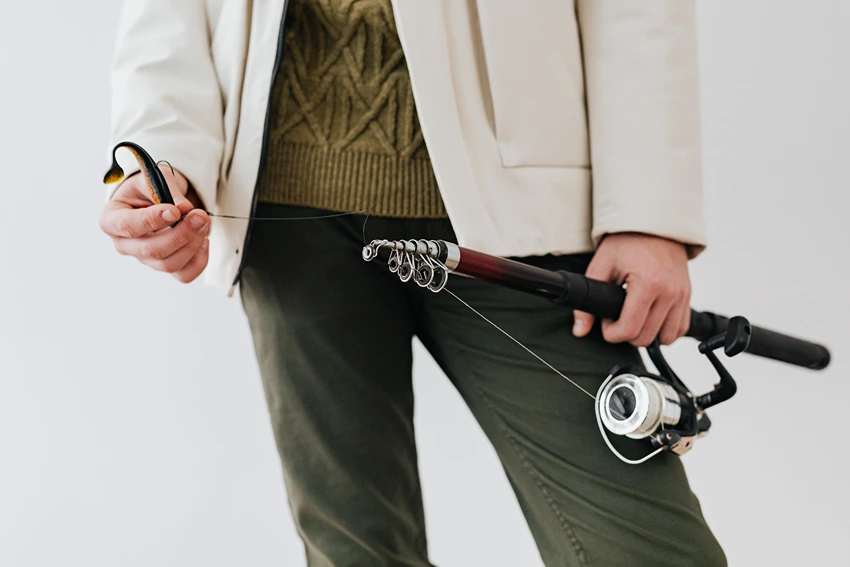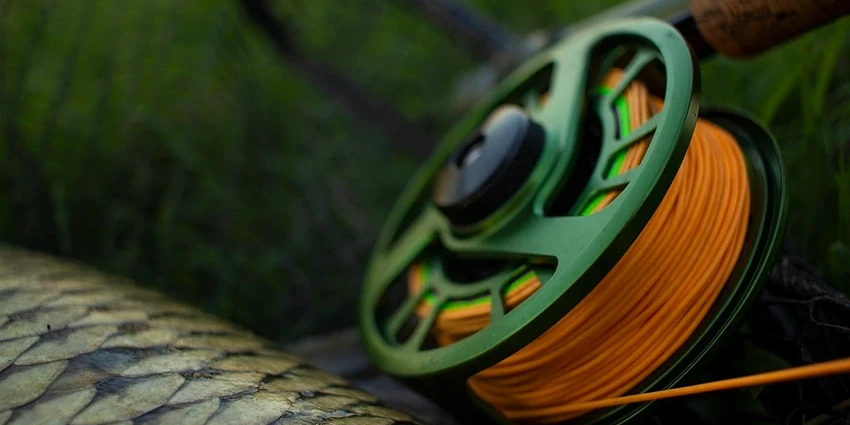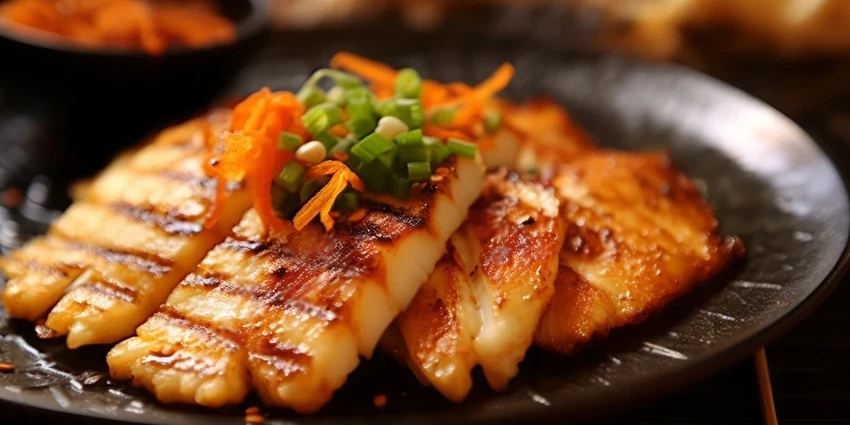All products were chosen independently by our editorial team. This review contains affiliate links and we may receive a commission for purchases made. Please read our affiliates FAQ page to find out more.
Ah, bass fishing – it’s not just a hobby, it’s an adventure! Whether you’re just dipping your toes into these waters or looking to refine your skills, this guide is your trusty companion. Let’s dive into the world of bass fishing and uncover some secrets that’ll have you reeling in those elusive bass in no time!
Jump to:
Gear Up: Essential Tools for Bass Fishing
Rod and Reel Recommendations
- Spinning Rod & Reel Combo: Ideal for beginners, easy to handle.
- Baitcasting Rod & Reel Combo: Offers improved accuracy and efficiency for the experienced.
Fishing Line Choices
- Monofilament for Spinning Reels: User-friendly and affordable.
- Braided Line for Baitcasters: Provides better control and less stretch.
Lure Selection
- Crankbaits: Versatile for various depths.
- Spinnerbaits: Effective year-round.
- Topwater Lures: Exciting surface action.
The Right Lures Make All the Difference
- Crankbaits: For deeper waters and structure exploration.
- Spinnerbaits: Ideal for cover and grassy areas.
- Topwater Frogs: Perfect for swampy, vegetative waters.
Mastering Bass Fishing Techniques
Spinnerbaits: The Reliable Choice
- Year-Round Effectiveness: A must-have in your tackle box.
- Depth Variation: Fish them at different water levels for best results.
Topwater Techniques: Surface Excitement
- Lure Types: Frogs, poppers, buzzbaits.
- Action: Creates wake and noise, attracting bass.
Pitching and Flipping: Precision Fishing
- Stealth and Accuracy: Ideal for fishing close to covers.
- Rod Movement: Key to effective casting in tight spots.

Crankbaits: Cover More Water
- Versatility: Ideal for exploring various underwater structures.
- Technique: Cast along drop-offs and weed beds for best results.
Finding the Perfect Spot
Identifying Bass-Friendly Environments
- Look for Cover: Bass love hiding spots like rocks, logs, and lily pads.
- Natural Structures: Points, drop-offs, and creek channels are hotspots.
The Role of Cover in Bass Fishing
- Ambush Points: Bass use cover to surprise their prey.
- Types of Cover: Includes docks, grass, and submerged objects.
Weather and Water: The Game Changers
Impact of Weather on Bass Activity
- Cloudy Days: Bass are more active and feed aggressively.
- Sunny Days: Bass prefer to stay close to cover.
Water Temperature Influences
- Cooler Water: Slower, more deliberate bait movement.
- Warmer Water: Faster, more aggressive lures.
Table 1: Essential Bass Fishing Gear
| Gear Type | Description | Why It’s Important |
| Spinning Rod & Reel | Easy to use, versatile | Ideal for beginners |
| Baitcasting Rod & Reel | Greater accuracy, efficiency | Better for experienced anglers |
| Monofilament Line | Affordable, user-friendly | Good for spinning reels |
| Braided Line | Less stretch, better control | Suited for baitcasters |
| Crankbaits | Diverse depth coverage | Useful in various structures |
| Spinnerbaits | Effective in cover | Year-round utility |
| Topwater Lures | Exciting surface action | Attracts bass visually |
Table 2: Bass Fishing Techniques
| Technique | Description | When to Use |
| Spinnerbaits | Reliable, versatile lure | Almost any condition |
| Topwater | Surface lures for visual strikes | Early morning, late evening |
| Pitching | Accurate casting in tight spots | Near cover, stealth needed |
| Flipping | Close-quarters casting | Dense cover, precise spots |
| Crankbaits | Covers large water areas | Exploring structures, drop-offs |
Register for our latest in-depth reviews and product round-ups from the experts
Enter your email address below to receive our twice monthly reviews emails.
By entering your details, you are agreeing to our terms and conditions and privacy policy. You can unsubscribe at any time.
Advanced Bass Fishing Techniques
Drop-Shotting: Precision and Patience
- Technique: Suspend bait above the weight for a natural presentation.
- Ideal Conditions: Clear water, finicky fish.
Mastering Jerkbaits: Mimicking Injured Prey
- Action: Quick, erratic movements to imitate wounded baitfish.
- Best Used: Clear water, active bass.
Versatility in Techniques: Adapting to Different Conditions
- Key: Switch techniques based on weather, water conditions, and bass behavior.
- Approach: Experiment with different lures and retrieval speeds.
Knot Tying Skills: Securing Your Catch
Importance of Reliable Knots
- Critical: Ensures lure stays on and fish stays hooked.
- Practice: Regularly practice knot tying for efficiency.
Step-by-Step Guide to Basic Fishing Knots
- Palomar Knot: Strong, simple, versatile.
- Clinch Knot: Easy, effective for various lures.

Utilizing Technology and Research
Leveraging Online Tools for Location Scouting
- Google Earth: Identify potential fishing spots.
- Fishidy: Access detailed maps and local fishing reports.
Analyzing Maps for Potential Fishing Spots
- Look for: Points, creeks, ledges, and other bass-friendly features.
- Plan: Develop a fishing strategy before hitting the water.
Persistence and Patience: Keys to Successful Bass Fishing
Sticking to Confident Areas and Techniques
- Consistency: Repeatedly fish areas where you’ve had success.
- Adaptation: Adjust techniques based on observations and experiences.
Learning from Experience and Practice
- Trial and Error: Every fishing trip is a learning opportunity.
- Patience: Bass fishing success often comes to those who wait.
Table 3: Advanced Bass Fishing Techniques
| Technique | Description | Ideal Conditions |
| Drop-Shotting | Bait suspended above weight | Clear water, finicky fish |
| Jerkbaits | Imitates injured baitfish | Clear water, active bass |
| Versatile Approaches | Adapting techniques to conditions | Varied, based on weather and water |
Table 4: Essential Knots for Bass Fishing
| Knot Type | Description | Best For |
| Palomar Knot | Strong, simple, and versatile | Most fishing scenarios |
| Clinch Knot | Easy to tie, reliable | Various lures and conditions |
Frequently Asked Questions
Early Morning/Late Evening: Bass are more active during these times.
Yes: Adjust your techniques and lure selection for slower bass activity.
65-75°F (18-24°C): Bass are most active in this range.
Match the Hatch: Use lures that resemble local forage.
Both Effective: Depends on access to fishing spots and personal preference.







